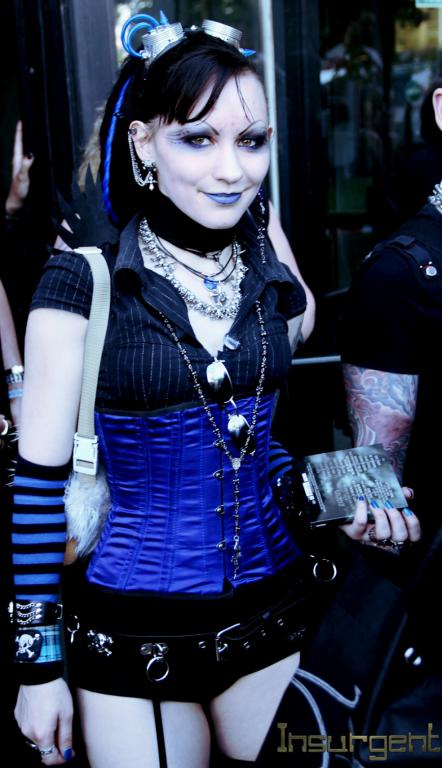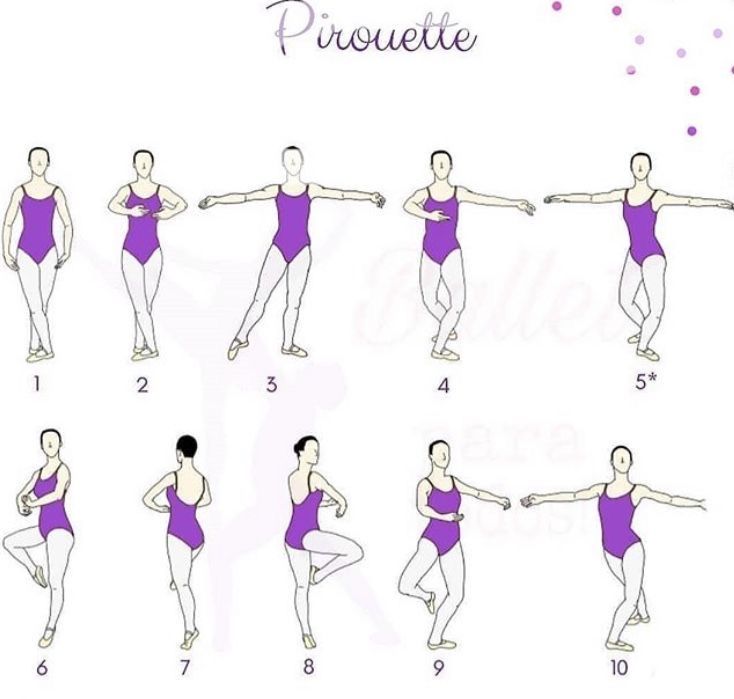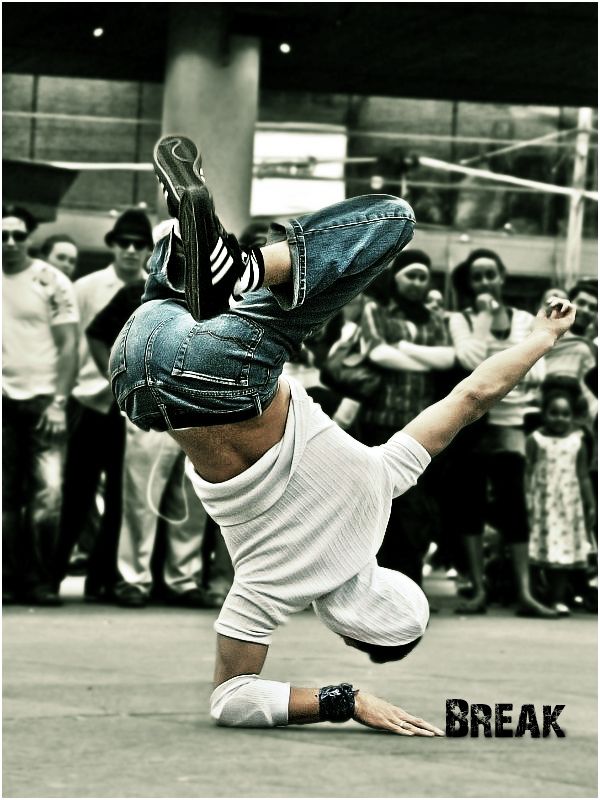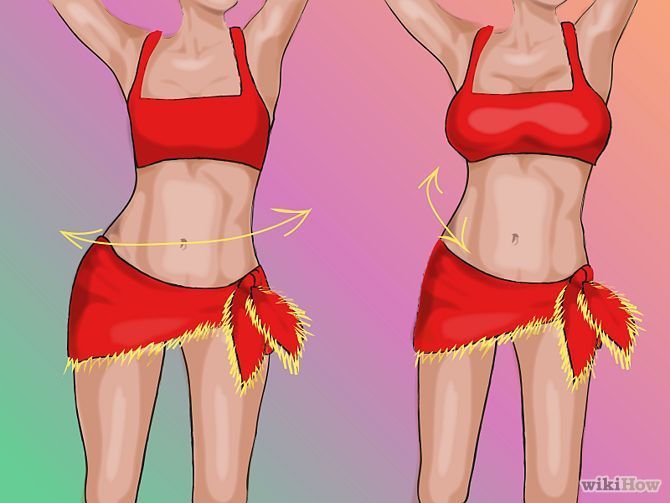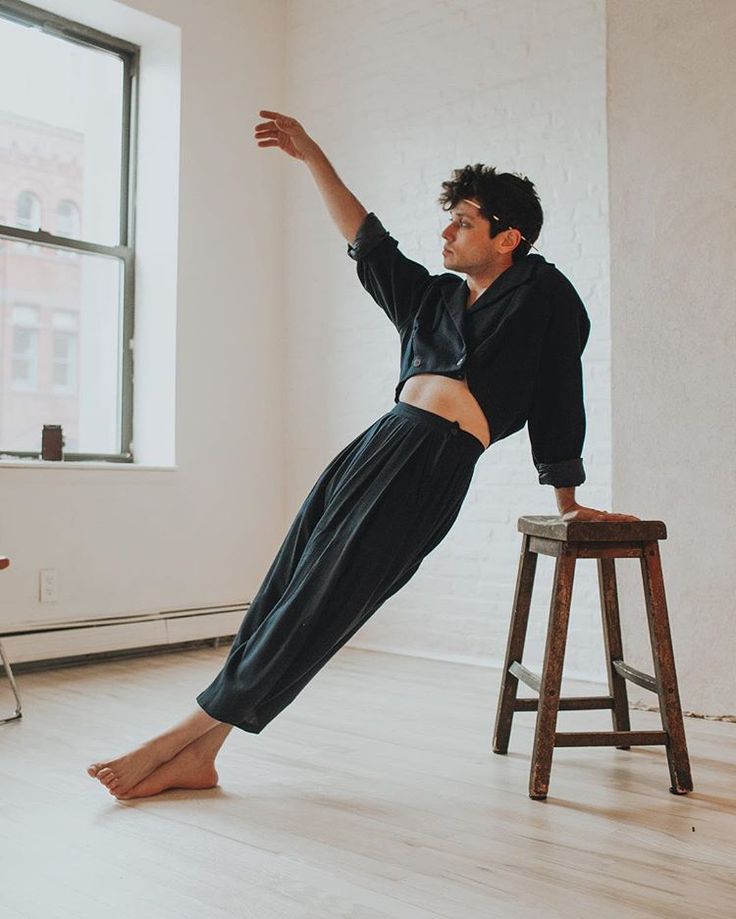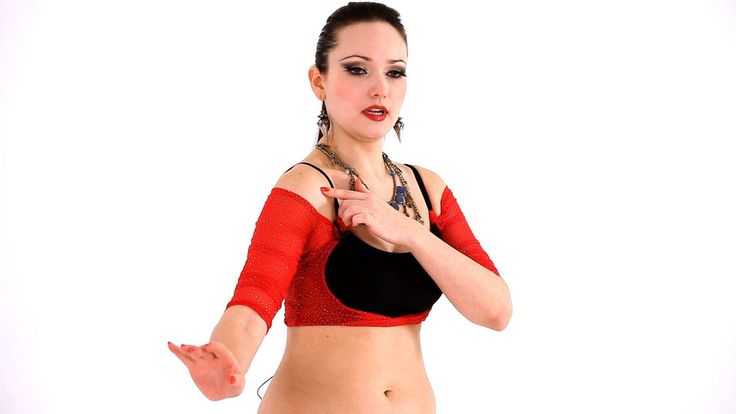How to dance gothic
How to Dance Gothic
How to Dance Gothic
By Kai MacTane and Antigone
Illustrations by Antigone
You went out to your local goth club in your black velvet frock coat, your hair teased up bigger and rattier than Edward Scissorhands’, and lace dripping from your wrists and throat. You looked fabulous. But as soon as you got on the dance floor, everyone started laughing — eventually, they had to toss you out of the club for being “deleterious to the proper level of angst.”
You need to learn to dance gothic.
It’s not that hard; just learn these simple moves and soon you can blend in with all the other spooky individuals on the dance floor at your local batcave. After all, for such an individualistic crowd, it’s kind of surprising how goths all seem to use the same moves. Maybe it’s something encoded in the Goth Genes™ rather than just lack of originality...
All difficulties and Goth Ratings are on a scale of one (pathetically easy or ridiculously non-gothic) to five (tragically difficult or stylishly über-gothic).
| Difficulty: Goth Rating: | |
| Put your hands in front of your face or maybe upper torso, elbows bent at about a 45-degree angle. Your palms should face away from your body, and your arms, wrists and fingers should be very loose. Now make swirly motions with your hands — the usual is circles going outwards at the top and back in towards the center of your body at the bottom, but some people just wave their hands around seemingly at random in a vertical plane in front of their faces. For maximum goth effect, the rotation of your circles should be a little out of phase — one hand should reach 12 o’clock in its circle a little bit before the other one. It helps if you make slight wavy motions with your fingers while you’re doing this one. These motions need to be slow, however — you don’t want it to look like you’re waving bye-bye; you want it to look like your fingers are gently weaving in an almost hypnotic pattern. Variation: For extra stylishness, you can move the center-points of your two circles simultaneously from one side to the other, letting your hands trail off into some other gesture when they get too far. (This can segue nicely into "Which Way is the Exit?", below.) | |
| Difficulty: Goth Rating: | |
| This one is much like Washing the Windows, but with two differences. Instead of facing your palms away from you, you hold your hands with the palms facing each other, a little closer than shoulder width. Then, instead of moving them in vertical circles, you spiral your hands around each other in a horizontal circle, parallel with the floor. It’s a little trickier, because you have to drop one hand under the other to keep from smacking your forearms together, but you don’t want to make it too obvious — your hands should just spiral lazily around each other with no apparent effort. In fact, “no apparent effort” is a good phrase to describe all these moves. Goth dancing isn’t really energetic; the idea is to be slow, graceful and languorous. | |
| Difficulty: Goth Rating: | |
| Put your arms outward and down at about a 45-degree angle from your body, with your hands around the level of your hips and the palms facing the floor with fingers spread. Don’t lock your elbows. Now, make horizontal circles with your hands, parallel to the floor. Unlike Washing the Windows, you want these circles to go in the same direction as each other, not in opposite directions. Take careful note of the direction of the arrows in the illustration. Don’t worry if your hands try to move forward a bit rather than staying out to the sides; that’s standard for this move. | |
| Difficulty: Goth Rating: | |
| In many ways the signature gothic dance move, this one is so simple, even a corpse could do it. The only real caveat with this one is, since it’s so obviously gothic and so totally butt-easy, you don’t want to rely on it overmuch. Save it for the single moment in any given song where the singer is displaying the maximum amount of angst, and don’t stick in this position for longer than a couple of beats. Otherwise you’ll look like a wannabe. | |
Interlude:
So far, you’ve gotten a bunch of moves with the hands. “What about my feet?” you may be wondering. “Where are the little footprint diagrams?” The answer is, there are very few of those here. There don’t need to be very many. Goth dancing doesn’t generally rely on fancy footwork, for a variety of reasons:
- Many goth women wear long skirts and dresses, flowing gowns, and other Victorianesque garments that practically brush the floor.
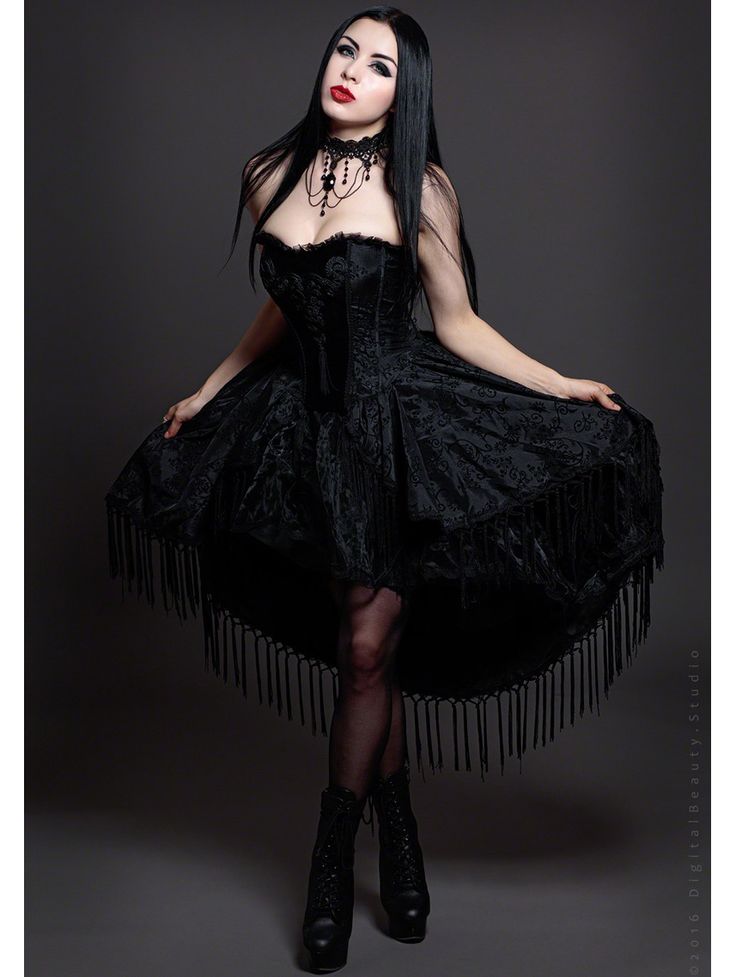 Any fancy footwork they did on those would be invisible. Sometimes, it’s hard to tell if those people even have feet.
Any fancy footwork they did on those would be invisible. Sometimes, it’s hard to tell if those people even have feet. - Many goths, both male and female, wear extremely pointy shoes, sometimes with a lift to the heels. These things are designed for looks, not traction or comfort. When your heels are wobbling and your toes are pinched, you don’t tend to do much fancy stepping.
- Alcohol and yes, drugs, are still a part of the goth subculture. It has occasionally been noted that sometimes the dancers simply stand and sway (the move known as “I Am a Frond of Seaweed”) because that may be all they are capable of at the time.
But there are a few goth foot maneuvers, which can be a very important and valuable addition to your gothic dancing. However, if you’re the “two left feet” type, or your own feet hurt, you can just move your feet in random patterns in time with the beat, and everything will be fine.
| Difficulty: Goth Rating: | |
| Stand with one foot pointing directly forward and the other behind it, angled out at about 45 degrees, as in the illustration to the left. On the next beat, lean forward, transferring your weight to your front foot. Then move the rear foot past the front one, pivoting 45 degrees on the ball of your foot as you do so. This should put you in the exact mirror of the position you were in a moment ago. As you can see in the illustration at right, the foot-pivot happens simultaneously with moving your other foot. “Wow, I could just walk all the way across the floor like this!” you think to yourself. Don’t do it. Take two steps total, maybe three, then reverse it and go backwards. Real goths never use this move to make any real progress; they just go back and forth with it. This is a good one to practice at home before you try it out on a public dance floor in front of dozens of goths who will mock you mercilessly if you accidentally fall on your face when you mess up. | |
My Artificial Hip Joint | Difficulty: Goth Rating: |
| Stand with your weight on one foot, with the other foot out in front of you. The stance should be somewhat similar to just after move 1 in "With Catlike Tread" (above), but your left foot should be pointing directly forward instead of out at an angle, and you needn’t be up on the balls of your feet. However, you shouldn’t have any weight on your right foot; you’re about to lift and move it. Lift your right foot just a tiny bit off the floor, then glide it around and out in a circle, keeping the knee straight and moving your leg from the hip. | |
Testing the Scratching Post | Difficulty: Goth Rating: |
| This one builds on Changing the Light Bulb, above. | |
| Difficulty: Goth Rating: | |
| Put your arms out to both sides, like you’re being crucified or something. As you do, swirl around once or twice, but remember to do it slowly, not quick like a little kid trying to get dizzy. If you do it right, this one can have some of the feel of time wheeling onward, the spin of the earth around the sun, and so on. Variations: This is one the most personalizable of all the moves here. You don’t even need to put both arms out; you can keep one in front of your body (ready to do some other move), or put it behind your back, or you can put it up to your forehead to show how angst-ridden you truly are. | |
"Ow! I Cut My Wrists!" | Difficulty: Goth Rating: |
| Start with "Stuck in My Coffin", above. Move your hands together until your thumbs touch. Now slowly drop your hands forward and down away from your body, keeping your elbows up against your waist. You can let one hand sort of slide across the other as you do this, in a sort of asymmetrical showing-off of the scars on the inside of your wrists. Like “Which Way is the Exit?”, above, this is a great one for displaying how angst-ridden you truly are. However, keep in mind that neither of these will really look quite right unless you actually are filled with angst (or at least can fake it reasonably well). | |
Of course, simply knowing these moves isn’t all there is to dancing gothic-style. While you’re practicing the moves at home, you’ll probably also want to practice stringing them together, so you don’t look like you’re doing one move in complete isolation, then doing another with no connection to it.
One other benefit of learning these moves — and their names — is that you can have hours of fun being a gothic dance critic, rating your friends (and social rivals) on how well they perform, say, “Sweeping the Floor”. And consider the scathing put-downs:
| Morticia: | “I think Simon’s dancing is just wonderful, don’t you?” |
| Vlad: | “He changes the lightbulb far too often, and he just can’t seem to figure out how to sweep the floor properly.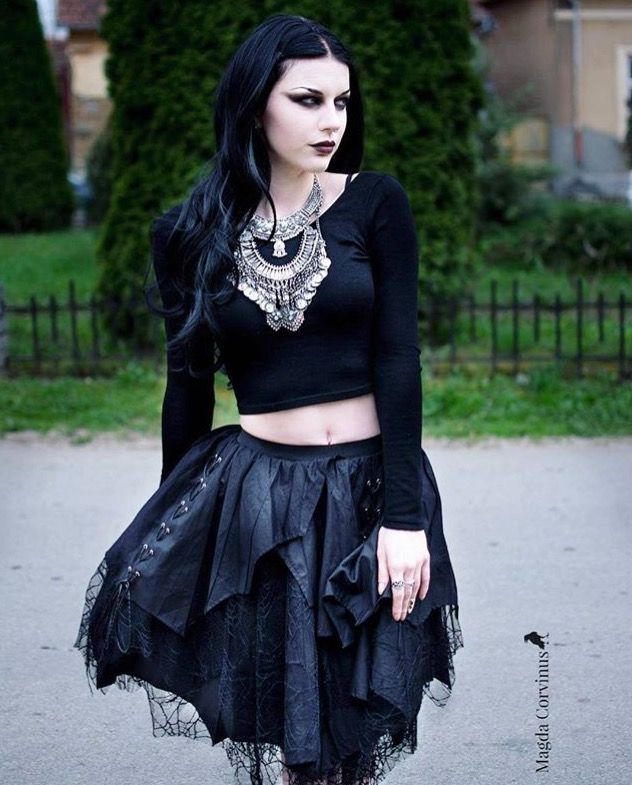 ” ” |
Kai MacTane has been webmastering the GothPunk.com(Munity) for six years now. People often compliment his dancing. Antigone personally prefers to dance punk, but she draws good stick figures.
Back to
Spatial Boundaries, Etiquette and Interpersonal Interactions at a Gothic Club
GothicText filesSpatial Boundaries, Etiquette and Interpersonal Interactions at a Gothic Club
by William Bexton
<[email protected]> Club dancing is often viewed as a highly social activity. The club experience often entails close contact with others, on and off the dance floor. The purpose of this study is to examine the interactions between people at gothic clubs. Most patrons of gothic clubs characterize themselves as extremely shy or solitary people. The social atmosphere created by a large group of such people should result in interactions much different from those found in an openly social situation.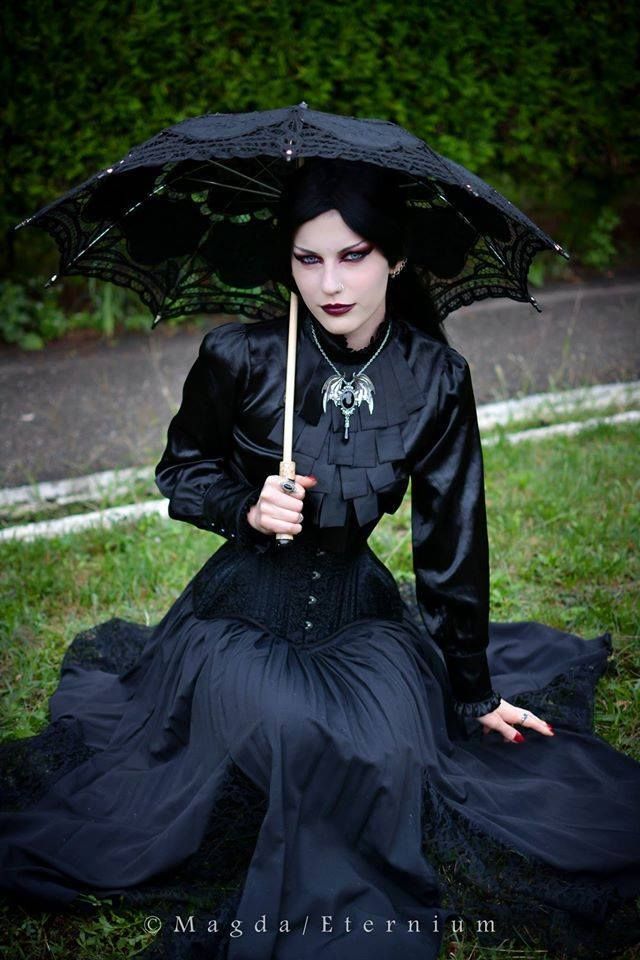 In particular, this study will examine the use of space by patrons on and off the dance floor, the etiquette and formal structure of personal interaction, and how supposedly shy or solitary people express themselves and present themselves to the public through dance and within the general social atmosphere provided by gothic clubs.
In particular, this study will examine the use of space by patrons on and off the dance floor, the etiquette and formal structure of personal interaction, and how supposedly shy or solitary people express themselves and present themselves to the public through dance and within the general social atmosphere provided by gothic clubs.
From what I experienced and observed during my fieldwork, I propose that the gothic club is a social domain within which there are many discrete "private" spaces filled by individuals. There are accepted ways to interact across these spatial boundaries. Accidental "border violations" and the reconciliatory actions following such an accident are governed by a similar set of accepted rules. These rules are designed to protect an individual's wish for privacy and continued self imposed separation from those around them, while still allowing some degree of meaningful social interaction to take place.
I conducted my fieldwork at three different sites in order to obtain a broader sample of behavior within the gothic genre.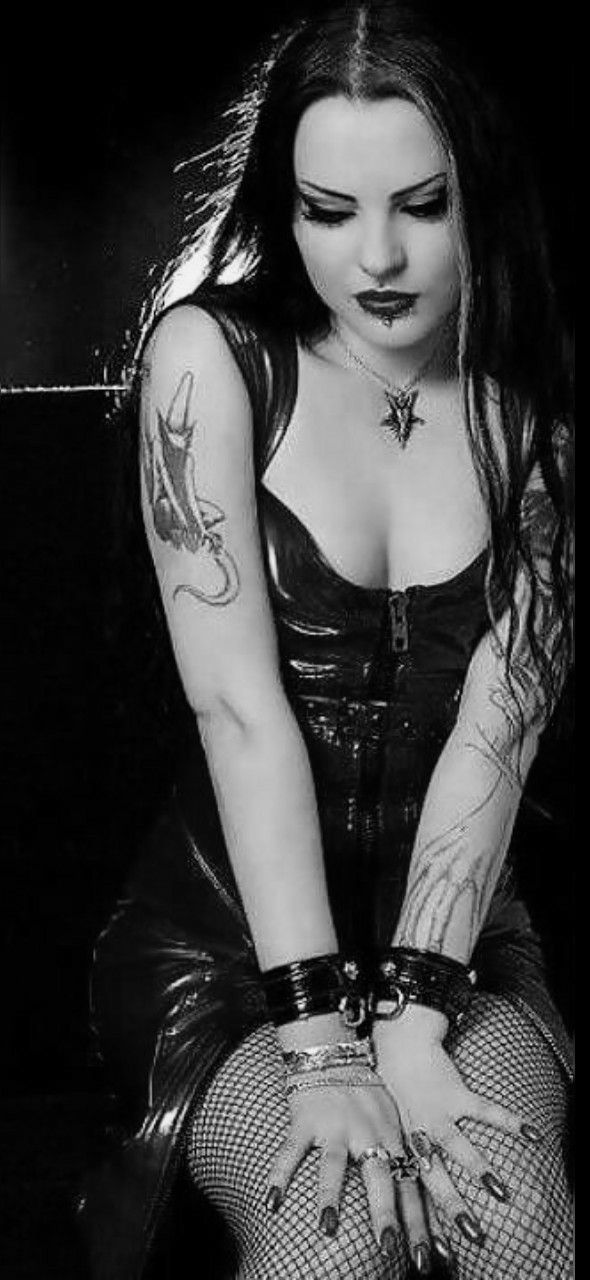 There are, however, some universal elements to the gothic club atmosphere. The lighting level is low. Smoke from smoke machines and cigarettes limits unobscured vision to a few feet; sporadic lighting adds to the effect. Candles provide flickery pools of light throughout the clubs - I took many of my research notes by candlelight. Incense and exotic cigarettes scent the air. Music ranges from a high, frantic, "violent whining sound" to a deep, somber drone. Club patrons wear almost exclusively black, though some wear white shirts (often ruffled) and tights. Most make their skin as pale as possible with foundations and powders and by avoiding sunlight during daylight hours. Black lipstick, eyeliner and fingernail polish is common, providing a striking contrast against white skin. Transvestitism is widespread, more so among men than women. Many men wear skirts or dresses; some women adopt clothing styles uniquely masculine, such as Victorian suits and jackets. Club personnel interact with patrons to a minimum.
There are, however, some universal elements to the gothic club atmosphere. The lighting level is low. Smoke from smoke machines and cigarettes limits unobscured vision to a few feet; sporadic lighting adds to the effect. Candles provide flickery pools of light throughout the clubs - I took many of my research notes by candlelight. Incense and exotic cigarettes scent the air. Music ranges from a high, frantic, "violent whining sound" to a deep, somber drone. Club patrons wear almost exclusively black, though some wear white shirts (often ruffled) and tights. Most make their skin as pale as possible with foundations and powders and by avoiding sunlight during daylight hours. Black lipstick, eyeliner and fingernail polish is common, providing a striking contrast against white skin. Transvestitism is widespread, more so among men than women. Many men wear skirts or dresses; some women adopt clothing styles uniquely masculine, such as Victorian suits and jackets. Club personnel interact with patrons to a minimum.
The first club I visited, House of Usher, is a well established club that draws a large crowd weekly. People come from around the bay area, Santa Cruz and occasionally Los Angeles to visit Usher (the shortened name used by most patrons). The club consists of a sharply defined dance floor broken into sections by rows of columns, a lounge, two bars (one adjacent to the dance floor, one in the lounge), a stage in front of the dance floor, and a balcony that overlooks the dance floor.
The second club I conducted fieldwork at, A Winter Gone By, draws many of the same people that Usher does, though not as many people come from outside the bay area. The dance floor is larger than Usher's and is loosely defined by groups of tables and chairs around its perimeter. There is a lounge and bar in an adjacent room and a balcony overlooking the dance floor. A stage next to the dance floor is used by some patrons as an extension of the dance floor when the club becomes more crowded.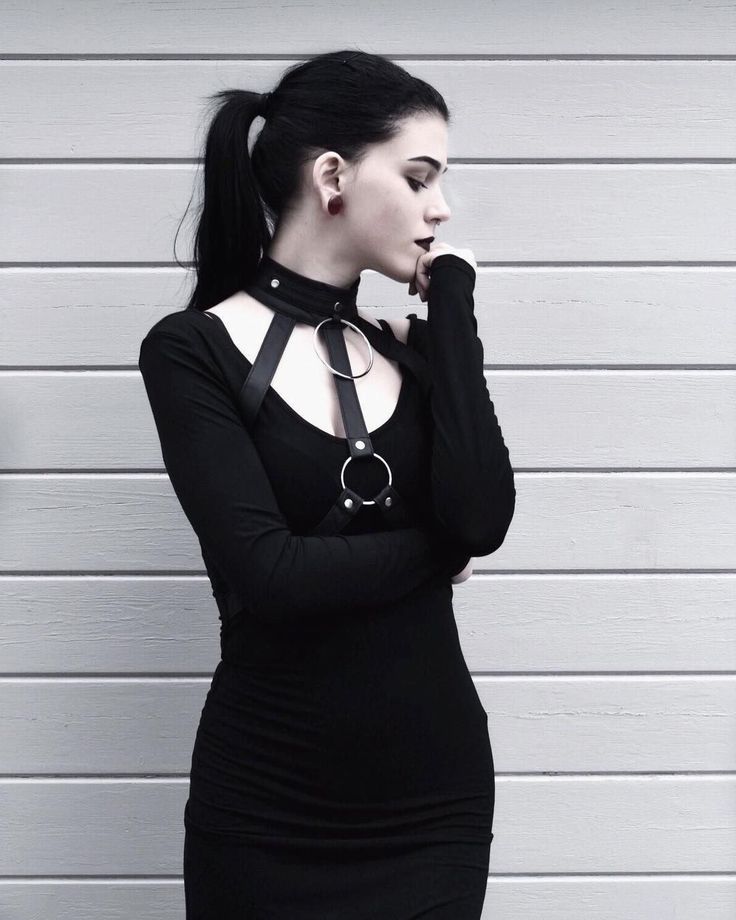
Death Guild, the third club in this study, draws a much smaller crowd than the first two. Many of the patrons know each other or have friends in common at the club. The dance floor is about as large as the floor at A Winter Gone By, is partially ringed by a balcony and is adjacent to a bar and billiards room. The balcony, which is often almost completely engulfed in darkness, is used as a lounge and extended dance floor when the main floor becomes crowded.
My first venture into the field, at House of Usher, was a bit disorienting. The combination of the dark, smoke and sporadic lighting (including strobe lights) made it difficult to maintain balance when standing still, let alone while dancing. For those first five hours, I sat at a corner table, observed and recorded.
By my second visit, this time to A Winter Gone By, I felt more sure of myself. In the four to five hours I spent there, I took a more active role than I had at Usher.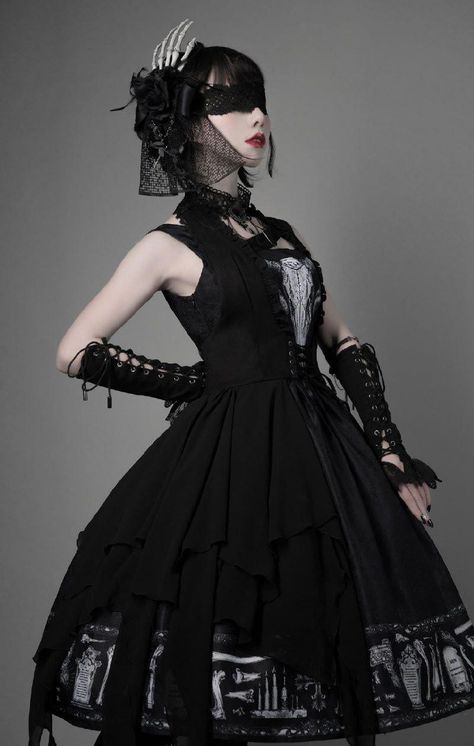 I danced, chatted with patrons of the club and conducted a few short interviews.
I danced, chatted with patrons of the club and conducted a few short interviews.
My time at Death Guild was spent in much the same way as it was at A Winter Gone By, though perhaps I danced more during this third visit. I had the coincidental opportunity to observe the patrons of this club in a concert setting. The band Apocalypse Theater played for an hour or so some time after midnight. I switched back into observation mode for this small concert, then discussed the concert with a few patrons, danced, and left.
Overall, the research and fieldwork portion of this study was relatively relaxed. The loose social atmosphere provided by a club allowed me to enter and observe unnoticed (given proper attire) and to participate as an assumed member of the group. There is no taboo against watching other people at a gothic club; many patrons "people watch" when not dancing. I realized during these first few hours that observing dancers at a goth club is a bit like watching a performance art piece - many dancers act out or physically interpret the music to a high degree. After talking with some patrons, it became clear that many of them looked at dancing in the same way. My efforts of mapping out the dance floor and use of space on it were much simplified by the balconies at all three clubs. I was able to sit almost directly over the dancing areas and watch individual dancers closely without making it obvious to them and potentially distracting them or making them feel uncomfortable.
After talking with some patrons, it became clear that many of them looked at dancing in the same way. My efforts of mapping out the dance floor and use of space on it were much simplified by the balconies at all three clubs. I was able to sit almost directly over the dancing areas and watch individual dancers closely without making it obvious to them and potentially distracting them or making them feel uncomfortable.
I have included with this report maps of each of the clubs and some samples of "private dance areas," the limits of which are defined by the movements of individual dancers around the floor through the course of a song. These areas sometimes overlap, but in each case, there is room enough for each dancer to occupy a discrete area of the dance floor with minimal physical contact with other dancers.
Something must be said for the concentration it takes to dance to gothic music at a goth club in what is considered a gothic dance style: the fluid twists and twirls, intricate gestures, "controlled falls" and spinning runs around the dance floor that seem to characterize gothic dancing require much agility, especially if one intends to stay on one's feet and out of the way of other dancers. I believe that this aspect of participant observation was most difficult for me: it required me to learn a suite of movements I was unaccustomed to in a fairly unfamiliar environment.
I believe that this aspect of participant observation was most difficult for me: it required me to learn a suite of movements I was unaccustomed to in a fairly unfamiliar environment.
People met my requests for interviews with mixed responses. Many politely declined, often providing reasons as to why they were unable or unwilling to take part in the interviews. Those patrons that did take the role of informants were quite eager to do so. Some mentioned that they were quite willing to "educate" someone relatively new to gothic clubs; others simply found some level of fun in it. I tried to keep my interviews as close as possible to conversation (though somewhat guided), more on a friendly than "business" level. As the informants talked about different topics, I jotted down quotes or ideas presented by them that I felt had some significant bearing on this study.
I observed two general patterns of space use on the dance floor. The first group of dancers minimized movement as much as possible.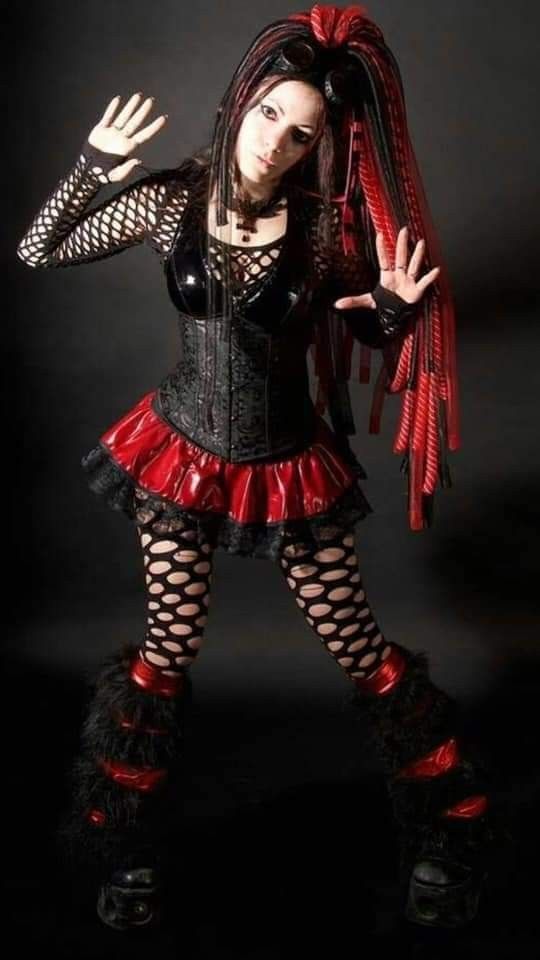 They swayed slowly to the music, gesturing in circular motions with arms and hands. Gesturing, in this group the major component of dance, was in general directed inwards, towards the dancer, or upwards. The dancers defined a small personal space around themselves with their gestures that no other dancers entered. I wondered whether this minimalist use of space might be a reaction to crowded dancing conditions, but observed the same movement patterns when only four or five people were dancing. Dancers did, however, spread themselves across the dance floor as much as possible so that all were as far from each other as possible. "Small space" dancers I spoke with confirmed what I observed in uncrowded dancing conditions. When the dancing area does become crowded, small space dancers maintain their dancing style, though more attention is paid to arm movements and avoiding accidentally hitting surrounding dancers with incautious gestures.
They swayed slowly to the music, gesturing in circular motions with arms and hands. Gesturing, in this group the major component of dance, was in general directed inwards, towards the dancer, or upwards. The dancers defined a small personal space around themselves with their gestures that no other dancers entered. I wondered whether this minimalist use of space might be a reaction to crowded dancing conditions, but observed the same movement patterns when only four or five people were dancing. Dancers did, however, spread themselves across the dance floor as much as possible so that all were as far from each other as possible. "Small space" dancers I spoke with confirmed what I observed in uncrowded dancing conditions. When the dancing area does become crowded, small space dancers maintain their dancing style, though more attention is paid to arm movements and avoiding accidentally hitting surrounding dancers with incautious gestures.
Accidental intrusions into these personal spaces called for quick retreats by both parties.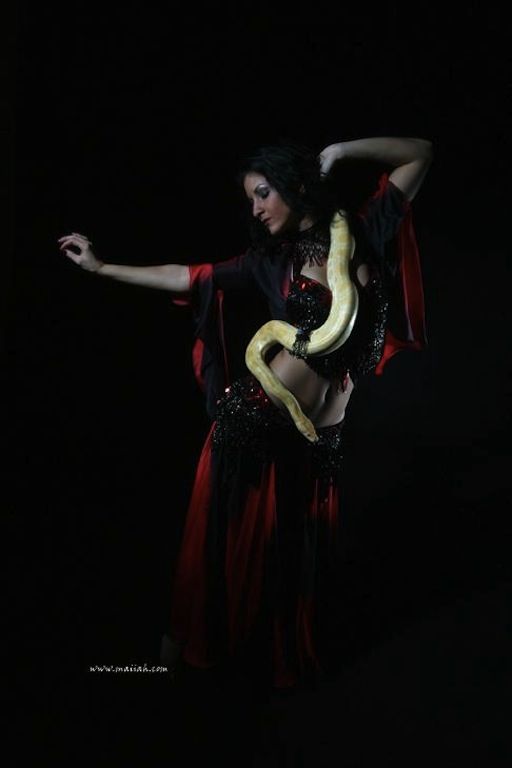 Collisions between dancers were rare, especially within this low movement group. When one did occur, however slight, both dancers apologized. The offending dancer often softly touched the "victim" on the arm or shoulder in a soothing way to strengthen the apology. When both parties were satisfied that friendly relations were maintained, dancing resumed.
Collisions between dancers were rare, especially within this low movement group. When one did occur, however slight, both dancers apologized. The offending dancer often softly touched the "victim" on the arm or shoulder in a soothing way to strengthen the apology. When both parties were satisfied that friendly relations were maintained, dancing resumed.
The second major dance style I observed was highly athletic, consisting of twisting, spinning, at times violent movements. This group of dancers tended to circulate around the perimeter of the dance floor, sometimes making numerous jaunts around the floor and less volatile dancers (who tended to group towards the center of the dance floor) through the course of one song. When the dance area was not crowded, each of these dancers formed large areas that were exclusively theirs to dance in. These areas at times took up almost a half of the dance floor. Other dancers did occasionally enter this space, but only intruded one or two steps, then withdrew to an unclaimed area of the dance floor.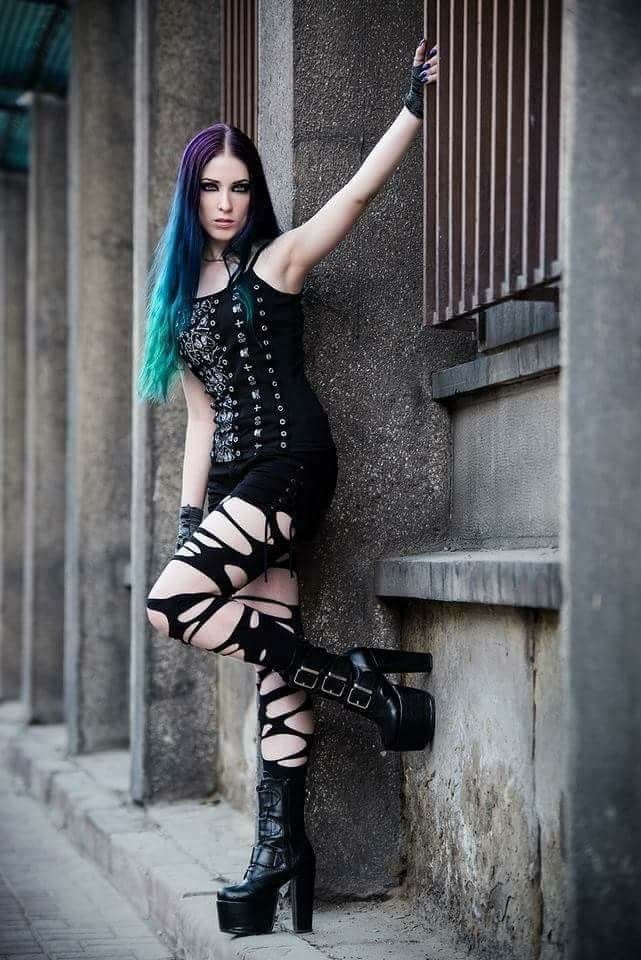 These athletic dancers tended to blanket themselves from other dancers with as much empty space as possible. This serves the functional purpose of allowing them to make large movements without fear of a collision, but often this seclusion within a "private" dancing area is carried to a point beyond the necessity of physical space. This large space between dancers made them quite visible; I thought it might be a way for this group of dancers to "show off" or very publicly display themselves. After talking to some of these dancers, however, I found that in general they did not see their dancing habits in the way I had at all. Most of them described entering a trance-like state when they danced in which they were almost completely unaware of what was happening around them. When dancing conditions became crowded, some large space dancers stopped dancing, remarking that they "couldn't move at all with all those people out there." Some, however, continued to dance. Under these conditions, the large spaces claimed by these dancers were usually occupied by one or two small space dancers throughout the course of a song.
These athletic dancers tended to blanket themselves from other dancers with as much empty space as possible. This serves the functional purpose of allowing them to make large movements without fear of a collision, but often this seclusion within a "private" dancing area is carried to a point beyond the necessity of physical space. This large space between dancers made them quite visible; I thought it might be a way for this group of dancers to "show off" or very publicly display themselves. After talking to some of these dancers, however, I found that in general they did not see their dancing habits in the way I had at all. Most of them described entering a trance-like state when they danced in which they were almost completely unaware of what was happening around them. When dancing conditions became crowded, some large space dancers stopped dancing, remarking that they "couldn't move at all with all those people out there." Some, however, continued to dance. Under these conditions, the large spaces claimed by these dancers were usually occupied by one or two small space dancers throughout the course of a song.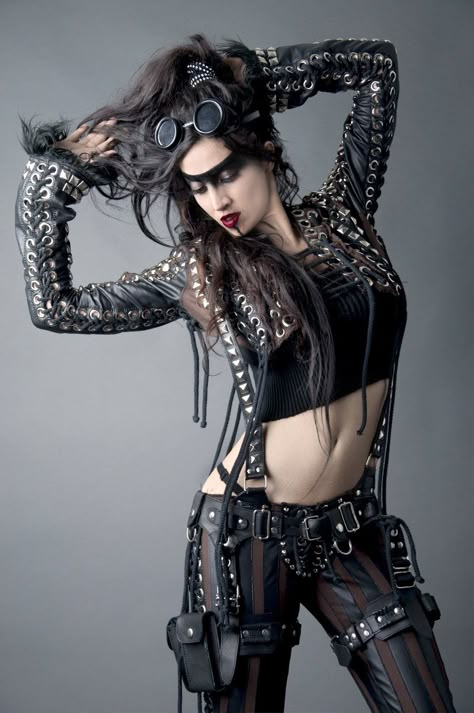 The large space dancers maneuvered around these fairly stationary dancers within their space, treating them more as immovable objects than as intruders into their own space.
The large space dancers maneuvered around these fairly stationary dancers within their space, treating them more as immovable objects than as intruders into their own space.
I wondered whether the trance state described by some large space dancers, combined with large movements, might make collisions fairly frequent. There were, however, almost no collisions. When asked how this was possible given their described mental separation from the reality of the dance floor, most of these dancers clarified their statements: "Oh, well, I can still see what's around me, but I don't really notice someone until they're right next to me. When I see them, I try to keep from running into them, but sometimes it doesn't work." The collisions that involve these large space dancers are often quite dramatic. Two bodies, one or both moving at a reasonably high speed, would try to occupy the same space at the same time. This was largely an unsuccessful venture. Limbs, hair and skirts tangled and moved abruptly at odd angles and were quickly re-collected by their somewhat shaken owners.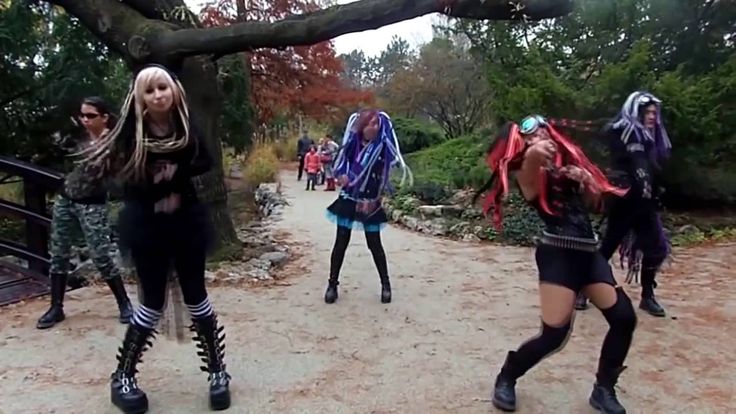 Apologies were profuse and sincere, halting the dancing of both parties involved for good portions of the presently playing song. Hugs were sometimes exchanged as part of the apology; if this was forgone, the least physical contact was a hand squeeze or a comforting pat or rub on the shoulder, often combined with a curtsy or bow or some other physical show of respect. The offending dancer would often apologize a second time later in the evening, wanting to know if the "victim" had been hurt, and to make sure there were no hard feelings.
Apologies were profuse and sincere, halting the dancing of both parties involved for good portions of the presently playing song. Hugs were sometimes exchanged as part of the apology; if this was forgone, the least physical contact was a hand squeeze or a comforting pat or rub on the shoulder, often combined with a curtsy or bow or some other physical show of respect. The offending dancer would often apologize a second time later in the evening, wanting to know if the "victim" had been hurt, and to make sure there were no hard feelings.
"And the mist will wrap around us
And the crystal, if you touch it...
Driven together
And driven
Apart"
- Andrew Eldritch, Sisters of Mercy
Both groups of dancers held the concept of a private space within the public dancing area in high regard. The atmosphere in the dance rooms was engineered to appeal to this concept. The smoky conditions on the dance floor made these inter-dancer boundaries more concrete. At times it was difficult to see anyone more than three feet away on the dance floor, especially considering that the overwhelmingly black-clothed dancers were already difficult to see against the dark background of the club walls. The dance floor lighting completed this illusion of physical boundaries. At times there was only strobe lighting, which made the smoke an almost solid grey wall around oneself. At other times, lights moved in geometric patterns over the floor and dancers. Dancers tended to avoid these circulating lights; the result was a light wall that separated dancers on either side of beams of light periodically.
At times it was difficult to see anyone more than three feet away on the dance floor, especially considering that the overwhelmingly black-clothed dancers were already difficult to see against the dark background of the club walls. The dance floor lighting completed this illusion of physical boundaries. At times there was only strobe lighting, which made the smoke an almost solid grey wall around oneself. At other times, lights moved in geometric patterns over the floor and dancers. Dancers tended to avoid these circulating lights; the result was a light wall that separated dancers on either side of beams of light periodically.
The concert at Death Guild was unlike any concert I had ever seen. When one thinks of a rock concert, visions of milling, dancing bodies come to mind, with perhaps a pit, some stage divers, some fans screaming their devotion. This is nothing like a gothic concert, though the music at this concert was very rock-like. Those patrons that did gather in front of the stage were somber, stood almost perfectly motionless throughout the performance and did little more than lightly applaud at the end of each song.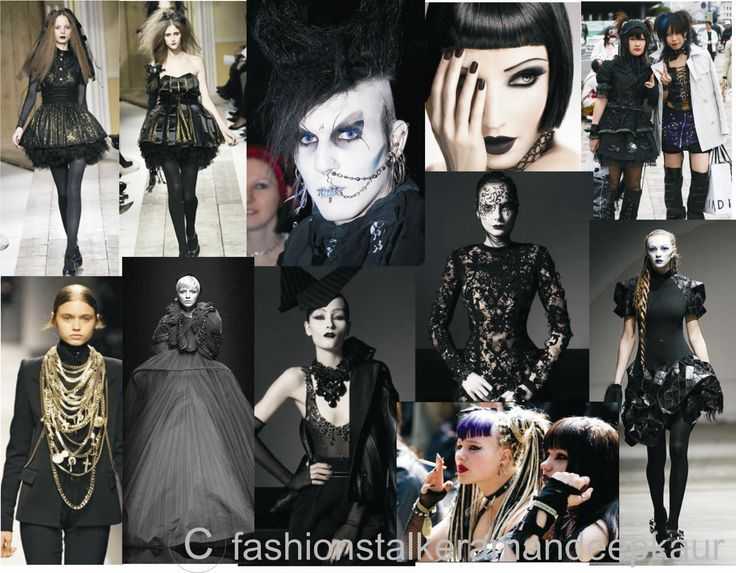 Some patrons sat on the floor in front of the stage; others sat at tables or booths or watched the performance quietly from the balcony. Patrons gathered on the dance floor in front of the stage were evenly spaced across the floor; few were closer to each other than three feet. The image that came to mind upon observing this was of guests at a funeral or somber occasion of some kind. I initially justified this somber gathering by deciding that no one really liked the band much, but my informants told me that this was typical of gothic concerts.
Some patrons sat on the floor in front of the stage; others sat at tables or booths or watched the performance quietly from the balcony. Patrons gathered on the dance floor in front of the stage were evenly spaced across the floor; few were closer to each other than three feet. The image that came to mind upon observing this was of guests at a funeral or somber occasion of some kind. I initially justified this somber gathering by deciding that no one really liked the band much, but my informants told me that this was typical of gothic concerts.
"Oooh, there's a nice dark corner! Let's sit there!"
Off the dance floor, almost all patrons chose to be fairly solitary. Occasionally small groups gathered for quiet conversation, but usually club patrons were found sitting or wandering about the club in pairs or singly. The preferred seats and tables were invariably in the darkest and most secluded corners of rooms. Eye contact with other patrons was brief, and seen by most informants as an intrusion into one's space.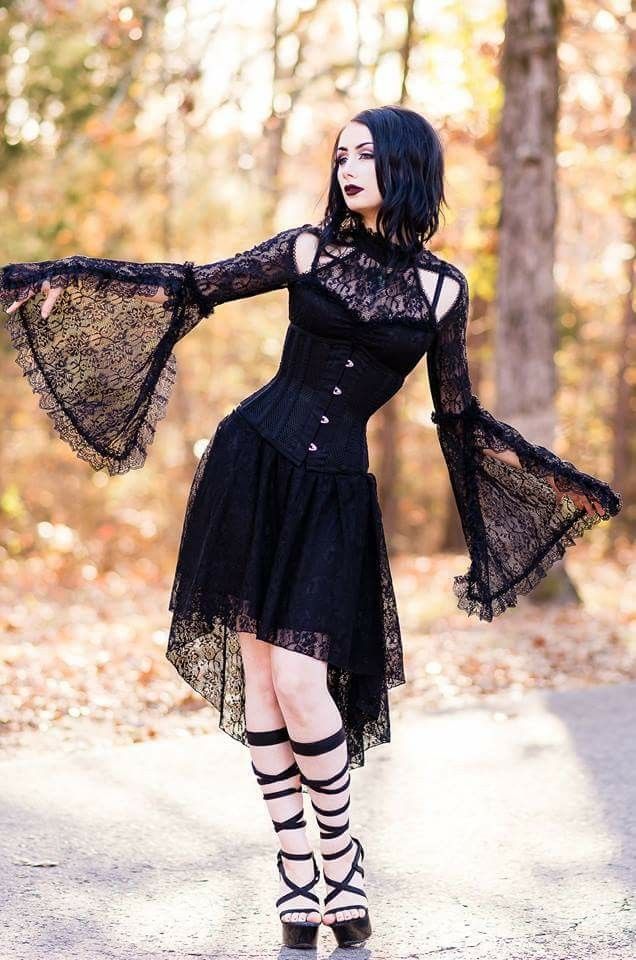 There was one set of conditions that made it acceptable to observe another patron: one could watch dancers from the balcony or from a table ringing the dance floor without disturbing anyone's sense of personal space. Though this behavior seems anti-social, especially within a social context, most patrons disagreed, instead expressing feelings resembling these:
There was one set of conditions that made it acceptable to observe another patron: one could watch dancers from the balcony or from a table ringing the dance floor without disturbing anyone's sense of personal space. Though this behavior seems anti-social, especially within a social context, most patrons disagreed, instead expressing feelings resembling these:
"It's not that I'm really anti-social; I just like being by myself. I came here tonight with a couple of friends, but we all like to wander around by ourselves. Every once in a while we find each other and 'check in,' see what's up and babble to each other for a couple of minutes, then we go our own way again. I like a lot of the people here, and talk to some of them, but only a little bit at a time. I'm pretty shy...I mean really shy. I get nervous if I stay around the same person for a long time without any 'time off.' I guess sometimes people do bother me, but usually not. So I talk to people for a little while, then get back up and wander around by myself or dance or just sit by myself for a while.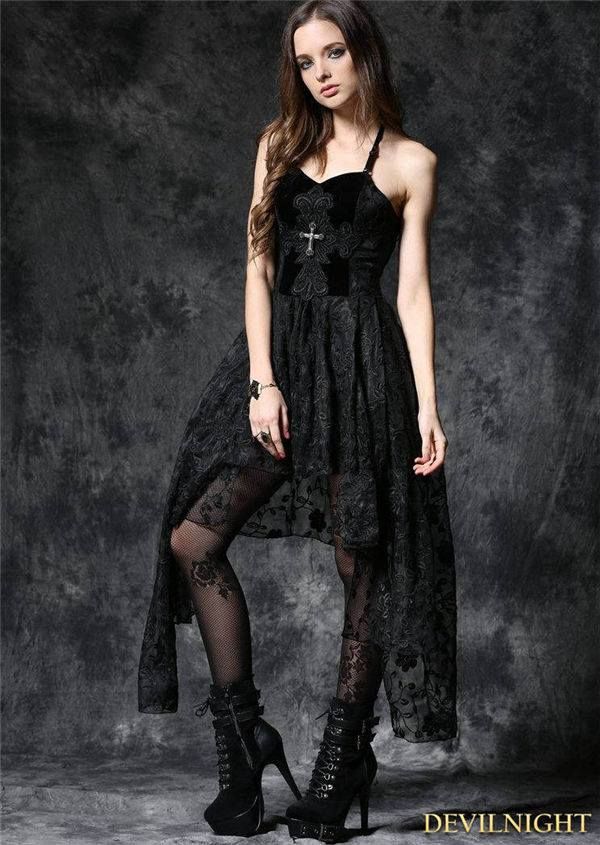 "
"
Patrons have several accepted methods of "polite" intrusion into one another's personal space. The degree of solitude usually afforded to other individuals at a gothic club is such that when an introduction is given, it is taken as more than just a passing word. The person approached has the option of either ending the attempt at an introduction then, usually by excusing themselves to rejoin friends or dance (but also by attempting to ignore the person who approached them after the initial greeting), or to start a conversation with the person who has just approached them. Although not always the case, introducing oneself or continuing contact with a patron who has just approached someone indicates that one considers them a likely suitor or potential good friend. More often than not, at the end of an extended introduction and conversation, two patrons will exchange phone numbers. I asked some patrons whether people actually find similarities enough from a short conversation in a club to actually call someone later and seriously consider them as potential "relationship material" or as possible friends; in most cases the answer was yes.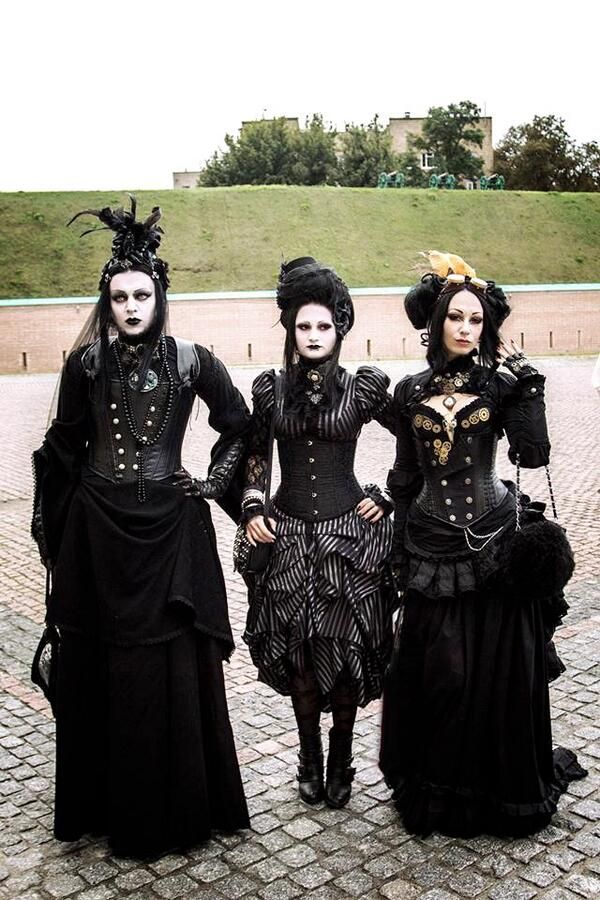 Most of the patrons have a few friends they originally met at gothic clubs; a good portion of these have had successful intimate relationships with people they met at gothic clubs.
Most of the patrons have a few friends they originally met at gothic clubs; a good portion of these have had successful intimate relationships with people they met at gothic clubs.
The first introductory method is to comment politely about a piece of clothing worn, a hairstyle that one finds unusual or especially creative, or a dance style or skill level that one finds impressive. The patron offering the comment often clasps their hands in front of them or behind their backs, intruding as little as possible into the other person's space. Often the complementer leans forward slightly in a bow to express respect for the other person. The patron receiving the complement often bows slightly to the person who has approached them and indicates their acceptance of the complement with a few words of thanks.
The second method of introduction widely used is to directly introduce oneself, saying that they have seen the other person often at a club. The justification for such an introduction is that they have seen each other so often that they "might as well know each other.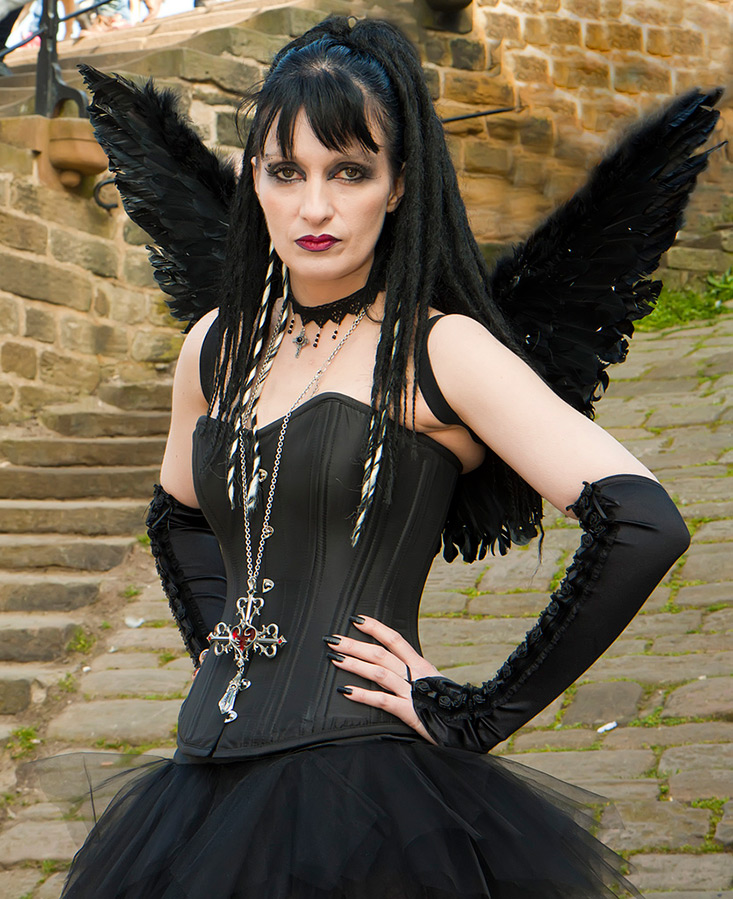 " The person initiating contact with this method of introduction does not usually bow as in the first method of introduction described, but does occasionally, and the personal space of the person they are approaching is still greatly respected.
" The person initiating contact with this method of introduction does not usually bow as in the first method of introduction described, but does occasionally, and the personal space of the person they are approaching is still greatly respected.
The third method of approach stems from the apology process described after an accidental collision while dancing. A patron will often apologize a second time off of the dance floor as an excuse to meet the person they ran in to. The person offering the apology approaches cautiously, bows and asks first if the other patron is "OK." The patron receiving the apology smiles and proclaims themselves in good health, thanks the person who has approached them and introduces themselves.
People unfamiliar with these acceptable methods of introduction often meet with a cold half acknowledgment of their approach and a quick escape by the person they have accidentally offended with their inept approach. The night I observed at A Winter Gone By, there was such an incident.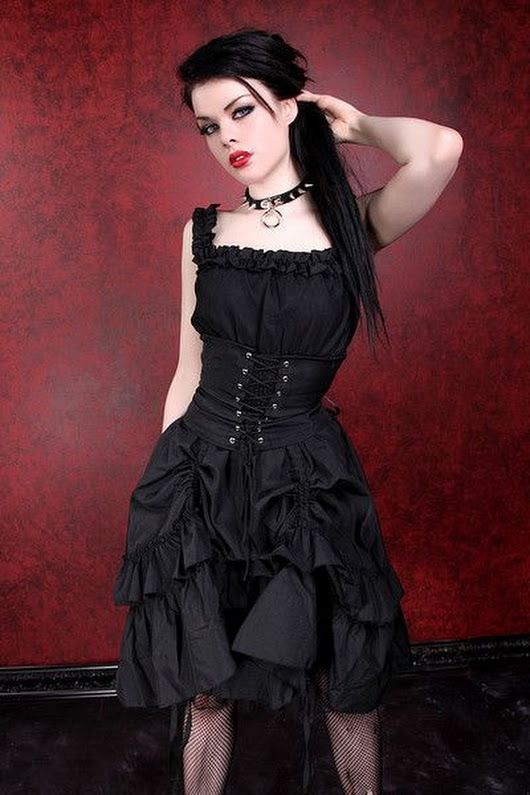 A somewhat inebriated man dressed in white basketball shoes, blue jeans and a white tee shirt, a definite fashion error at a gothic club, incautiously approached a couple sitting at a table, cheerily and unceremoniously plopped himself down next to them on the bench they were sitting on (much too close; he bumped into the young man he sat down next to and did not move away, as would have been considered appropriate), loudly said hello and asked them to tell him "what this place was about," and if they wouldn't come dance with him. The two regulars accosted by this man looked somewhat bemusedly at each other, then turned as one to their attacker. The nearer of the two told the man that they were sorry, "but We dance by ourselves here. I think you should try it." The man looked somewhat taken aback, but left, realizing that the couple had turned their attention towards each other and were decidedly ignoring him. I heard the other patron in the couple remark after the offending man had left that, "someone doesn't belong here.
A somewhat inebriated man dressed in white basketball shoes, blue jeans and a white tee shirt, a definite fashion error at a gothic club, incautiously approached a couple sitting at a table, cheerily and unceremoniously plopped himself down next to them on the bench they were sitting on (much too close; he bumped into the young man he sat down next to and did not move away, as would have been considered appropriate), loudly said hello and asked them to tell him "what this place was about," and if they wouldn't come dance with him. The two regulars accosted by this man looked somewhat bemusedly at each other, then turned as one to their attacker. The nearer of the two told the man that they were sorry, "but We dance by ourselves here. I think you should try it." The man looked somewhat taken aback, but left, realizing that the couple had turned their attention towards each other and were decidedly ignoring him. I heard the other patron in the couple remark after the offending man had left that, "someone doesn't belong here.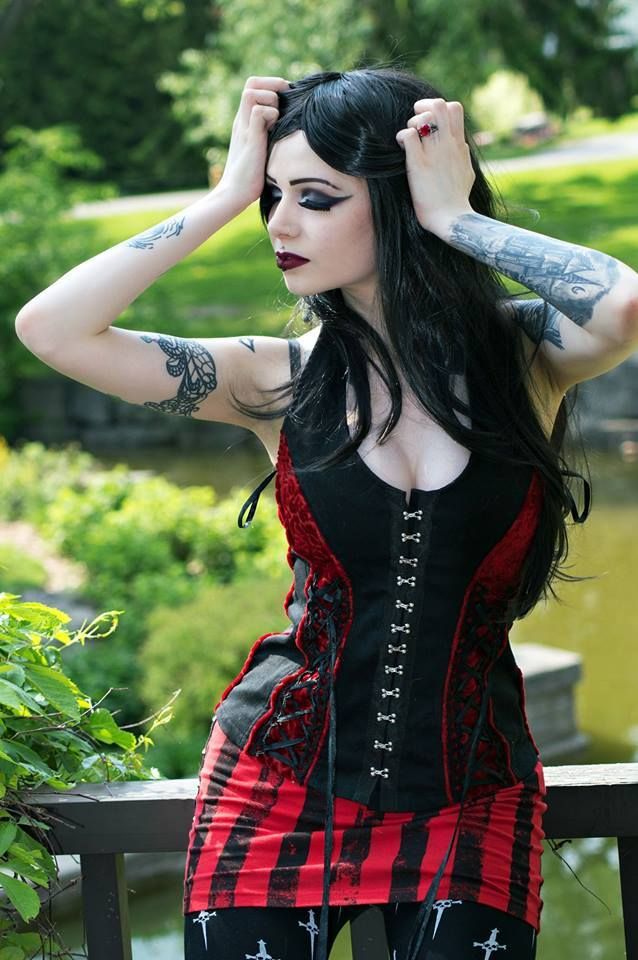 " The couple chuckled briefly and then returned to their conversation. Informants asked about this exchange said that it happens occasionally, though most newcomers are brought to the club by someone familiar with the local social conventions. The reaction by the offended regulars to this intrusion was seen as an acceptable response to an individual seen as socially inept.
" The couple chuckled briefly and then returned to their conversation. Informants asked about this exchange said that it happens occasionally, though most newcomers are brought to the club by someone familiar with the local social conventions. The reaction by the offended regulars to this intrusion was seen as an acceptable response to an individual seen as socially inept.
The social atmosphere created by these rules of engagement suit the regular patrons of gothic clubs well. Most patrons expressed a disillusionment with the more gregarious social interactions and "herd mentality" of popular culture; the formalized social interactions and uses of exclusionary personal space allow them to interact with people they have at least musical and dance tastes in common with and provide them with a method of expression through individualistic dance that one would be hard pressed to find outside the domain of the gothic genre.
In most popular dance clubs, there is little emphasis on the individual and even less attention to needs of personal space. Dancing becomes a highly social group activity in which many people dance within a close proximity to each other. Body contact is frequent and accepted; to interact and feel comfortable in such a situation, one needs to at least partially sacrifice the concept of individuality and the sacredness of inviolate personal space. One needs to be content to dance in a relatively inexpressive style typified by a bouncing or swaying movement (rave, techno, hip-hop dance styles), group dancing (country line dancing), or formalized dancing (ballroom, square dance, etc.) all almost devoid of unique expressive movement, all but formalized dance devoid of intricate or movement.
Dancing becomes a highly social group activity in which many people dance within a close proximity to each other. Body contact is frequent and accepted; to interact and feel comfortable in such a situation, one needs to at least partially sacrifice the concept of individuality and the sacredness of inviolate personal space. One needs to be content to dance in a relatively inexpressive style typified by a bouncing or swaying movement (rave, techno, hip-hop dance styles), group dancing (country line dancing), or formalized dancing (ballroom, square dance, etc.) all almost devoid of unique expressive movement, all but formalized dance devoid of intricate or movement.
The regular patrons of gothic clubs find the sacrifice of personal space, individuality and expression necessary to dance in these types of clubs an unacceptable compromise of their privacy and individuality. The space needs afforded to dancers in a gothi c club allow individuals to maintain a private space around themselves and room to express themselves individually in their dance styles.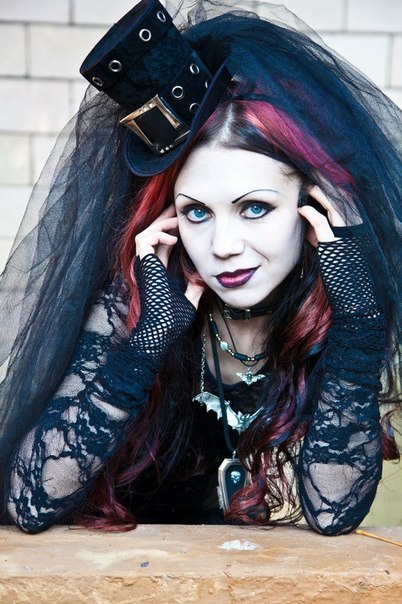 The etiquette of the apology on the dance floor re-affirms this sense of separatism when it is violated.
The etiquette of the apology on the dance floor re-affirms this sense of separatism when it is violated.
"Small talk stinks!"
- Peter Murphy, Bauhaus
Off the dance floor, the rules of social interaction encountered in a gothic club allow people to keep a firm sense of individuality by partially excluding others from the space they occupy and feel comfortable in. The interactions that do occur are courteous and generally sincere; the thought and time that one must put into such interaction dissuades one from petty or meaningless interaction.
The withdrawn and isolated nature the patrons of Death Guild displayed during the concert there is a further extension of both the on- and off-dance floor actions that typify the social setting of a gothic club. The dance floor ceased to be a dance floor once there were non-dancing patrons there to watch the band. The physical separation between the concert watchers and their demure state firmly and silently stated to all around them that they still held their private space in high regard and that all social rules applied - concert or no concert.
For many of the regular patrons, gothic clubs are their only real places of voluntary social interaction outside of small gatherings of friends. Many of the regulars at these clubs love dancing and enjoy meeting new people, but would not feel comfortable doing so in an atmosphere less structured and accepting of a private nature than that of a gothic club. On nights when there are not gothic clubs (all in the area are one day a week clubs), the regular patrons stay at home. I explored the internet some and found a newsgroup called alt.gothic, which was created as a worldwide forum for "goths". One post I ran across on this group read:
"no clubs tonight...<sigh>...i guess i'll stay home and talk to my computer..."
Most of the patrons of the clubs I visited do go to the gothic clubs they like whenever possible; if there were more that they liked, many of the regulars would frequent them in addition to the clubs they already visit weekly.
The social conventions presented in this paper create a space in which people who do not like prolonged close contact with others may function in a relaxed and comfortable state. I have little doubt that if these clubs did not exist, there would be a reasonably sized population of private people "stewing in their own juices" at home, avoiding most social contact. The gothic club is one of the only institutions in which an individual who needs concrete personal space and privacy can enjoy dancing, social interaction and display a creative and expressive personality. People are social creatures. We are defined by the culture we have built around ourselves. In a "global community," as all western-influenced areas of the world are, it is important to find a sub-culture one feels comfortable in. For those among us who have a need for both privacy and social activity, the gothic club may indeed be an ideal.
wes
How to dance gothic?
03/01/2005, 07:34 #one
It's probably here.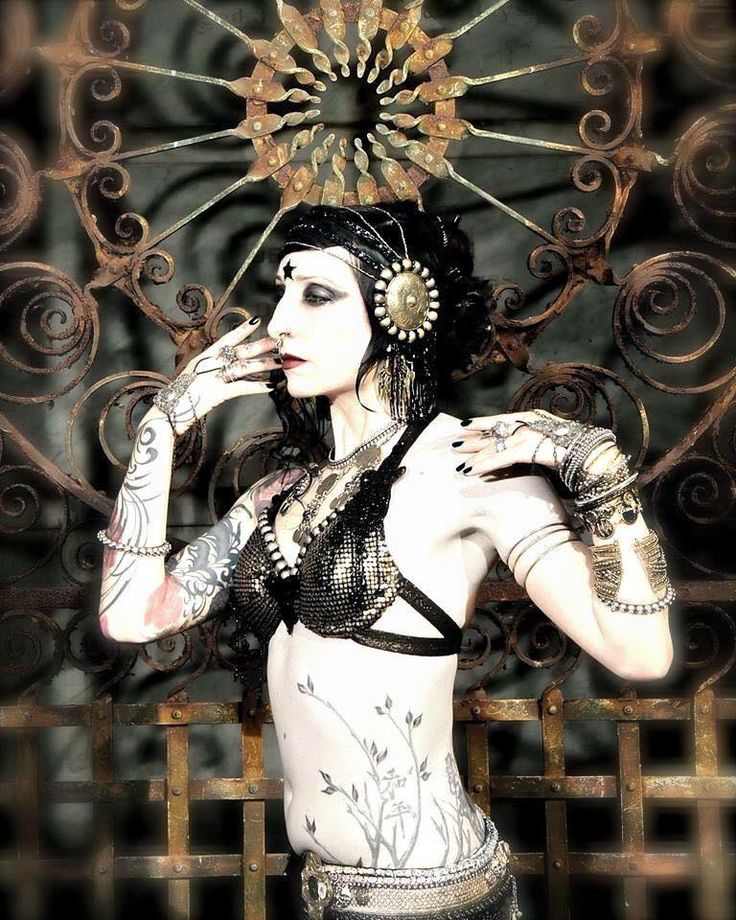
I saw a wonderful link http://www.idance.ru/show.php?id_a=335, where you can be taught to dance gatishna.
Notice (gloomily) that the movements are judged not only by difficulty, but also by goth..
Reply with quote
03/01/2005, 10:52 #2
It's funny. The movements are basically the same, but in my opinion,will look stupid from afar
Reply with quote
03/01/2005, 12:22 #3
you don't understand anything - it's depressing! and in general, for some reason it seems to me that the Goths are not inclined to dances ... at least to such ...
Reply with quote
03/01/2005, 12:23 #four
..guys, of course you will excuse me, maybe my cheerful look at everything works here, or maybe this dance is really funny, but .. try to repeat it all and you will understand why it is so fun! Although, maybe the meaning of Gothic by its own renunciation of the world to give him laughter and joy? "We bring laughter and joy to people" (c) - the true motto of a true Goth?
::hier konnen sie mich sehen::
Reply with quote
03/01/2005, 16:04 #5
I don’t understand something, this is another banter over the Goths ...
Reply with quote
03/01/2005, 16:48 #6
and in general, for some reason it seems to me that the Goths are not inclined to dance ... at least to such ...
"- Goth kids dance to express pain and suffering.
- Yeah.The only cool way to dance is to keep your hands at your sides and your eyes looking at the ground. Then every three seconds you take a drag from your cigarette." (c) South Park =)))
Khy-hy, but the article is informative, yes -)).0006
Morticia: "I think Simon dances great, don't you agree?"
Vlad: "He changes light bulbs too often and seems to be wondering how best to clean the floor."
Reply with quote
03/03/2005, 15:13 #7
I didn’t have the patience to finish reading, not because it was monotonous and boring (it’s true), but because if I had a minute more, I would have been hysterical until the evening.
Reply with quote
11.03.2005, 11:51 #eight
Posted by Old Nehfel
and in general, for some reason it seems to me that the Goths are not inclined to dance .
.. at least to such ...
Daemoni, etiam vera dicenti, non est credendum.
Nemo me impune lacessit!
Reply with quote
03/20/2005, 23:17 #9
Wash some stupidity. From the side it looks like a robot has entered the dance floor. Wow, crap!
"There is a land of the living and there is a land of the dead, the bridge between them is love... the only way to survive, the only meaning"
© Thornton Wilder
Reply with quote
04/07/2005, 13:31 #ten
"Window cleaning", "Changing a light bulb", "Cleaning the floor", "Lie down in my coffin", "Oh! I opened my veins!" =)))))))
A very smart bastard! Class!..
Reply with quote
12.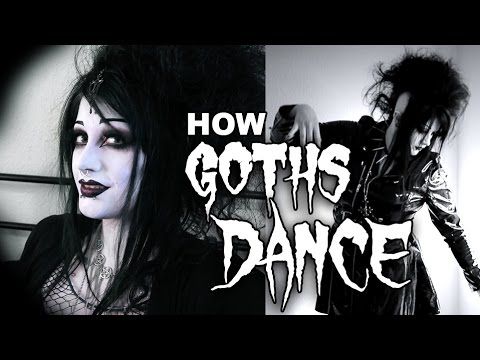 04.2005, 18:02 #eleven
04.2005, 18:02 #eleven
It seems to me that Gothic dance as such does not exist!
Any dance in which there are graceful, smooth movements can be attributed to the Gothic!
Reply with quote
06/18/2005, 23:03 #12
The Goths are a vulnerable people .... and you can’t be so frankly st***** Xia ...
Reply with quote
07/02/2005, 14:05 #13
Goths are a vulnerable people....
Come on... Why can't you dance now? in what sense is vulnerable .... How to turn on music for the whole so not vulnerable, but music involves movement ....
Reply with quote
07/03/2005, 11:53 #fourteen
Forgive me, the Goths, but I laughed for a long time.Most of all I like the degrees of difficulty, especially in the movements of the hands. Well, I have never seen such a complex one!
Sorry again, I didn't mean to offend anyone.
Everything is in our hands, so we can't let them down! (Coco Chanel)
Reply with quote
07/03/2005, 13:32 #fifteen
Elven I completely agree with you! A very difficult dance! And one more thing, I wonder what kind of music it is to dance like that ... The most important thing is not to fall asleep in the middle ...
Reply with quote
Gothic 1: - Dances of the Nameless from the Gothic series | Page 2
-
Dear guests and newcomers, welcome to our forum
Here you can find answers to almost all your questions about the Gothic series of games (including various mods for it), The Witcher, Risen, The Elder Scrolls, Age of the Dragon and many other games.
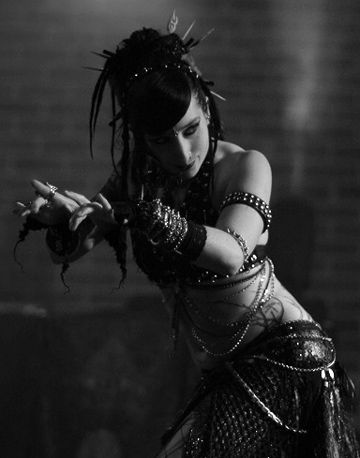 You can also find out the latest news about the development of new projects, play exciting FRPGs, admire the creativity of our members of the forum, or show yourself what you can do. And finally, you can discuss common hobbies or just have fun chatting with visitors to the Tavern.
You can also find out the latest news about the development of new projects, play exciting FRPGs, admire the creativity of our members of the forum, or show yourself what you can do. And finally, you can discuss common hobbies or just have fun chatting with visitors to the Tavern. To be able to post on the forum, please post in this thread.
Good luck!
JavaScript is disabled. To fully use our website, please enable JavaScript in your browser.
- Topic author Magoth
- the date of the beginning
Magoth
★★★★★★★★★★★
Administrator- First message
- #one
Not a bad mood roller.
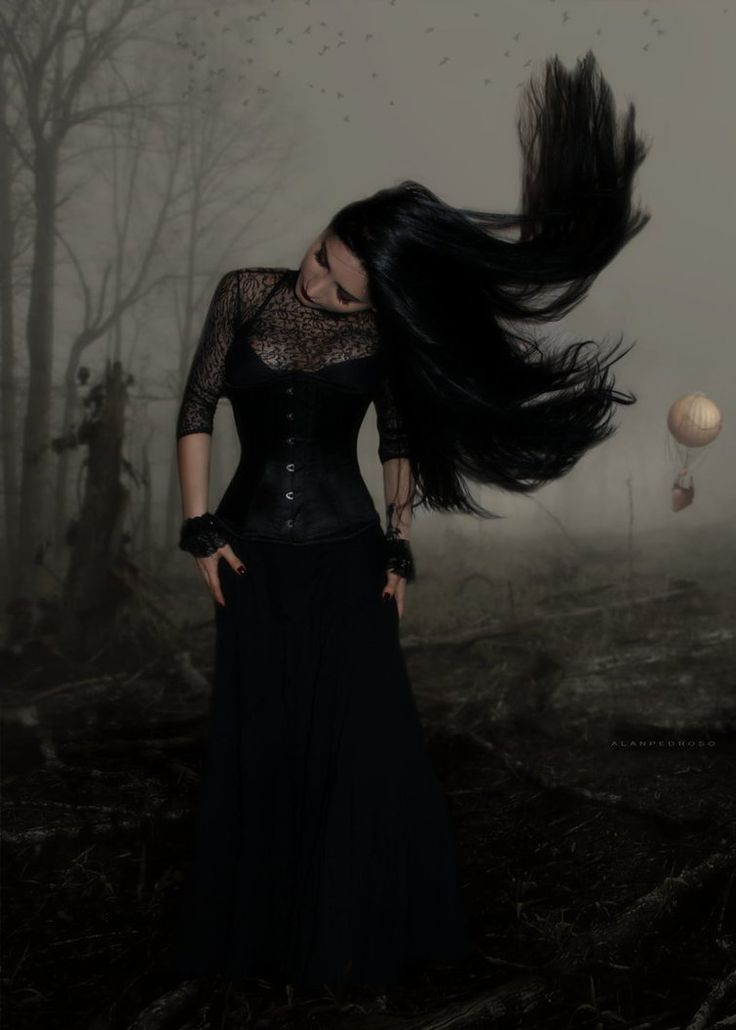 ..
..
Last edit by moderator:
Saturas
Modder- #21
Re: Gothic 2 Cool Trick!
But in my opinion both.. sadly...
Dragon
Forum member
- #22
Re: Gothic 2 Cool Trick!
depends on the mood.
 the main thing is to be able to find .. nice words ... in the morning it is difficult
the main thing is to be able to find .. nice words ... in the morning it is difficult Young Cheef
Forum member
- #23
Re: Gothic 2 Cool Trick!
he dances well
:)clone(:
Forum member
- #24
Pr dances on the same topic:
http://www.
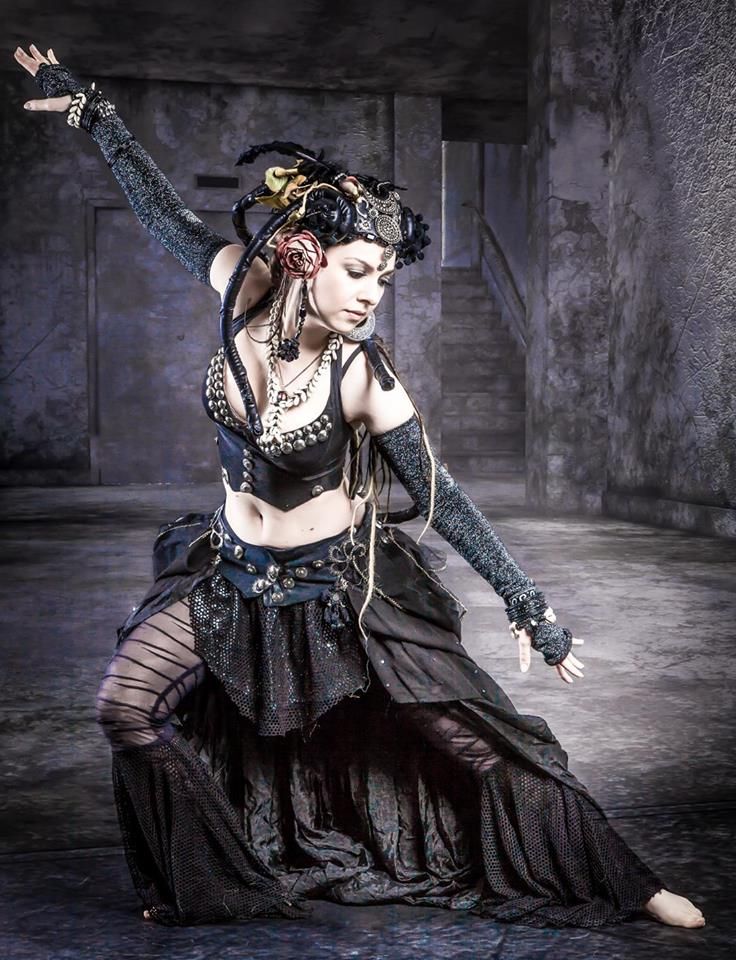 youtube.com/watch?v=CDof8-gj5zs
youtube.com/watch?v=CDof8-gj5zs Ur-tRall
Forum member
- #25
:)clone(: wrote:
PR dances on the same topic:
http://www.youtube.com/watch?v=CDof8-gj5zs
Click to expand...
Maybe it's better to create a new topic?
Vladgamer
Forum member
- #26
:)clone(: wrote:
PR dances on the same topic:
http://www.
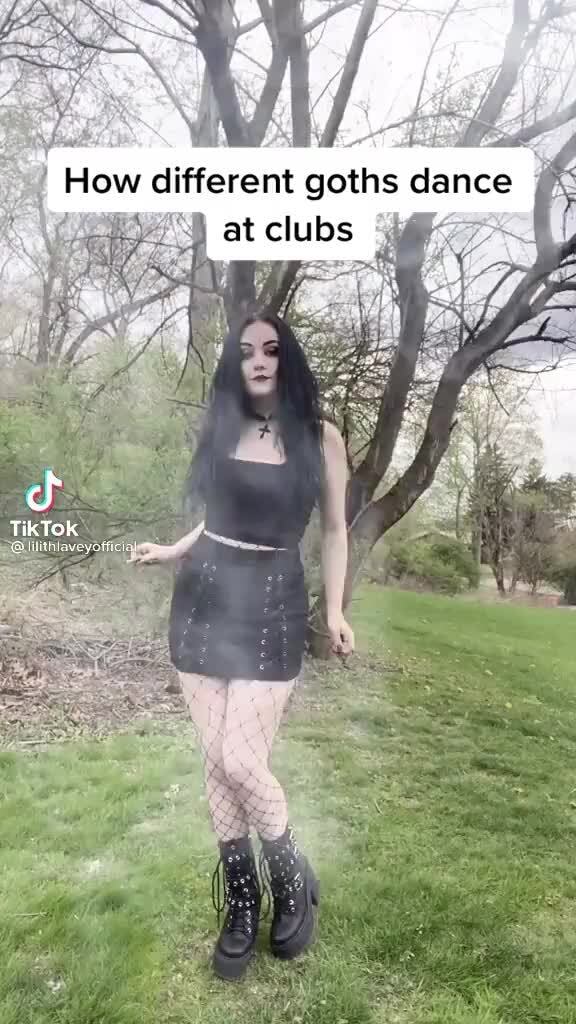 youtube.com/watch?v=CDof8-gj5zs
youtube.com/watch?v=CDof8-gj5zs Click to expand...
Some kind of nonsense, honestly.
Ilya.
Forum member
- #27
Really fun!
I'm talking about the dance of the native.Master of Gothic
Honorary Member of the Forum
- #28
Really positive video!
Login or register to reply.
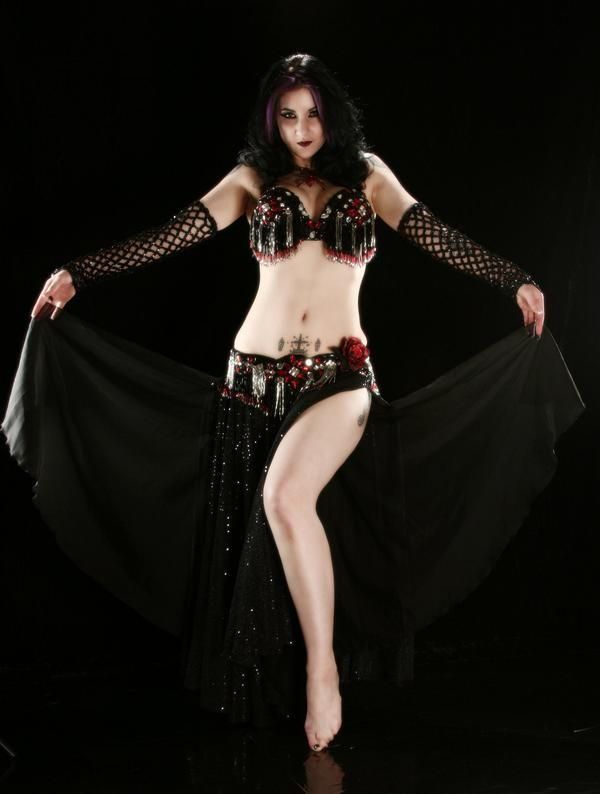
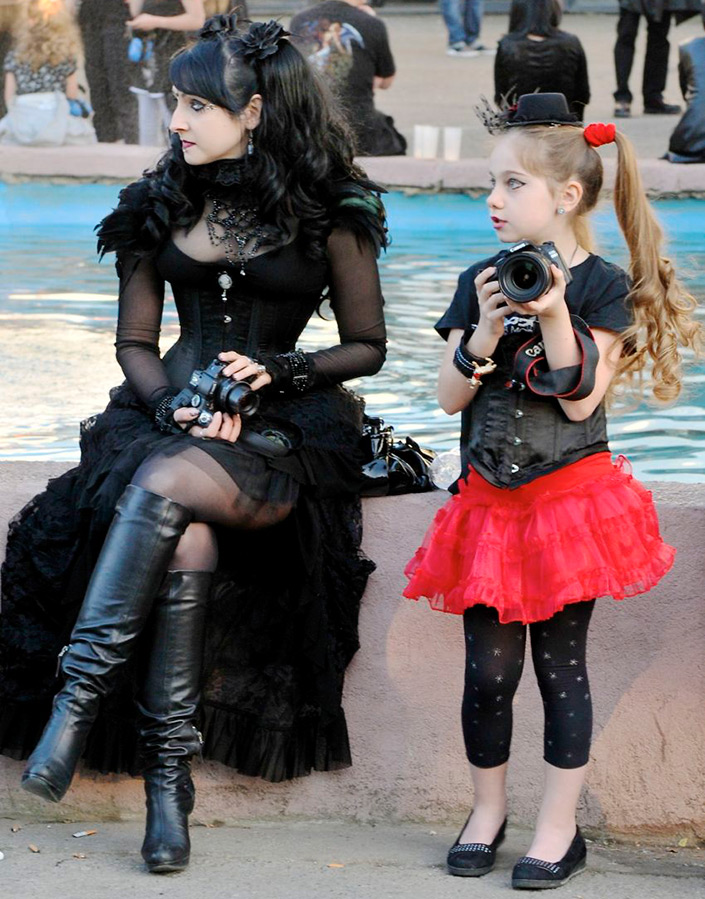 Don’t move your circles independently — that just winds up looking silly.
Don’t move your circles independently — that just winds up looking silly. 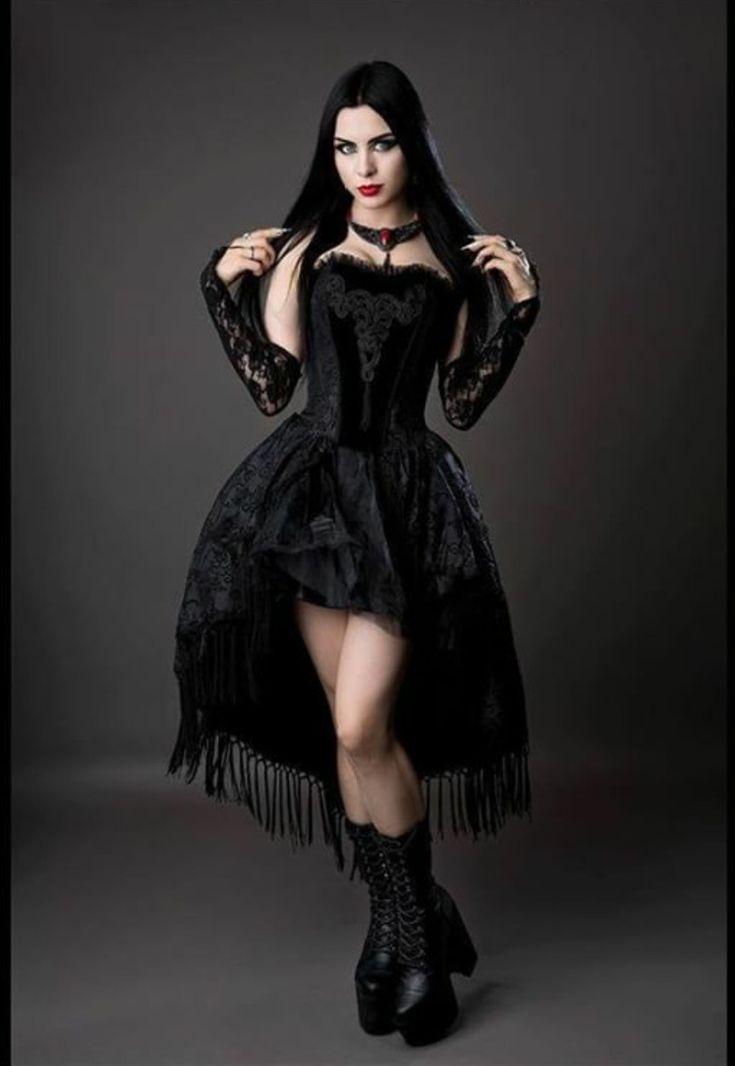
 You just fold your forearms over each other in an X shape across your chest, like you were a corpse in its coffin. You’ve seen Bela Lugosi do this hundreds of times, just before he sits up and says "Good eeeeeve-ning."
You just fold your forearms over each other in an X shape across your chest, like you were a corpse in its coffin. You’ve seen Bela Lugosi do this hundreds of times, just before he sits up and says "Good eeeeeve-ning." 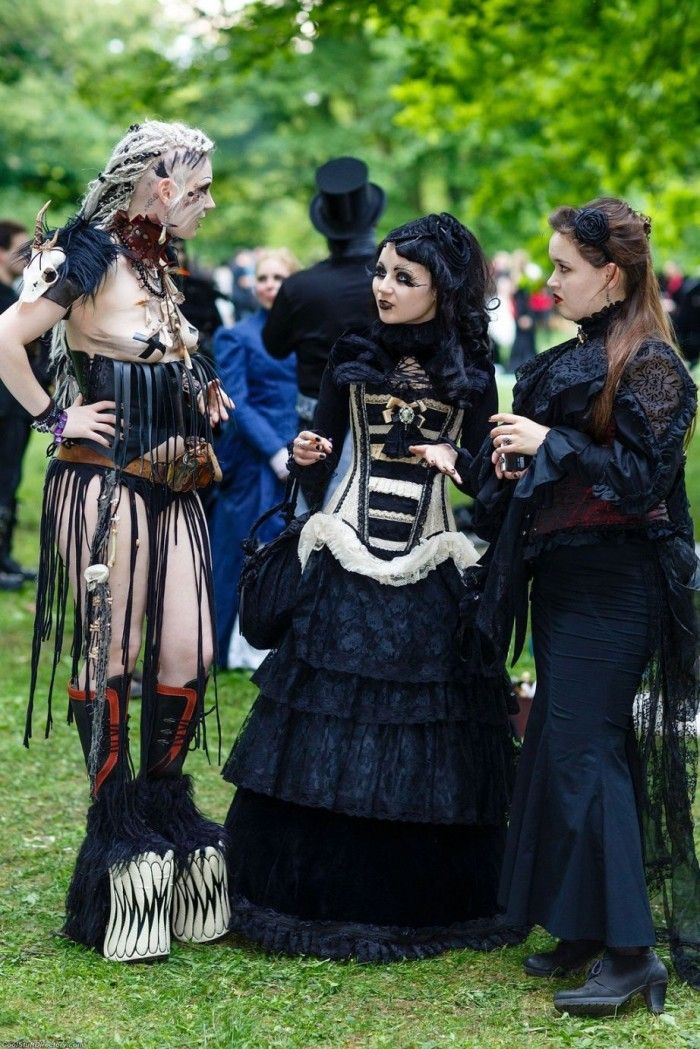 A little more than half of your weight should be on your rear foot. Now lift up onto the balls of your feet. In time with the music, lift your front foot and daintily place it a bit farther away from your body — you’ll need to bend your rear knee quite a bit while straightening the front leg.
A little more than half of your weight should be on your rear foot. Now lift up onto the balls of your feet. In time with the music, lift your front foot and daintily place it a bit farther away from your body — you’ll need to bend your rear knee quite a bit while straightening the front leg.  On the other hand, public mocking is great for racking up angst points.
On the other hand, public mocking is great for racking up angst points. 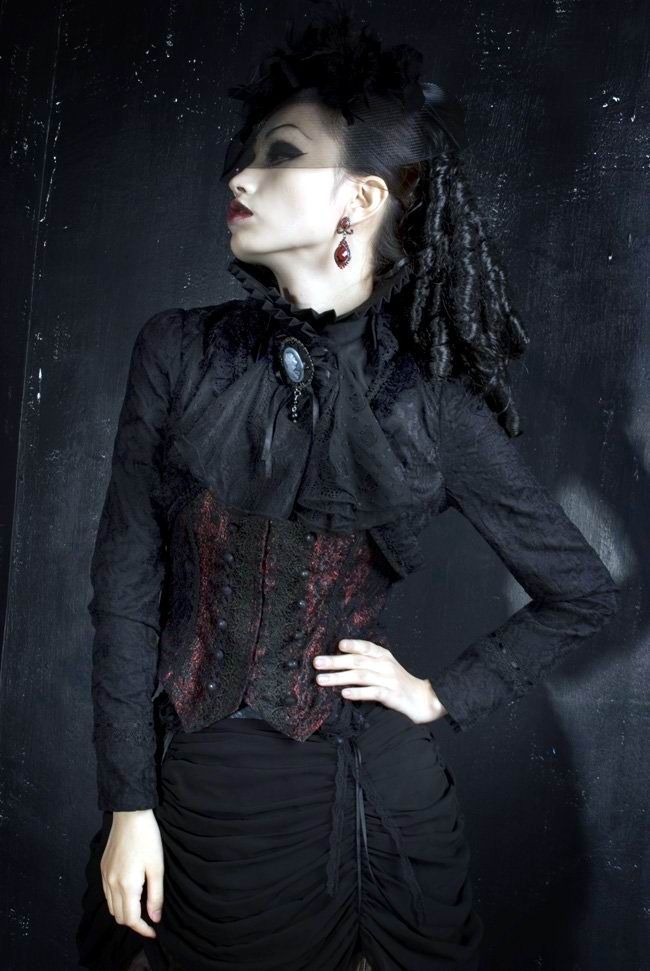 Start from the same position, with your hands facing each other in front of your face. Then, instead of swirling them around each other in a horizontal circle, you swirl them in vertical circles around each other. Your hands should be moving away from you at the top of the circle and toward you at the bottom. As you make these circles, slide your hands higher and higher, then when you can’t go any higher, start bringing them back down toward your chest... but don’t reverse the direction of the circles you’re making.
Start from the same position, with your hands facing each other in front of your face. Then, instead of swirling them around each other in a horizontal circle, you swirl them in vertical circles around each other. Your hands should be moving away from you at the top of the circle and toward you at the bottom. As you make these circles, slide your hands higher and higher, then when you can’t go any higher, start bringing them back down toward your chest... but don’t reverse the direction of the circles you’re making. 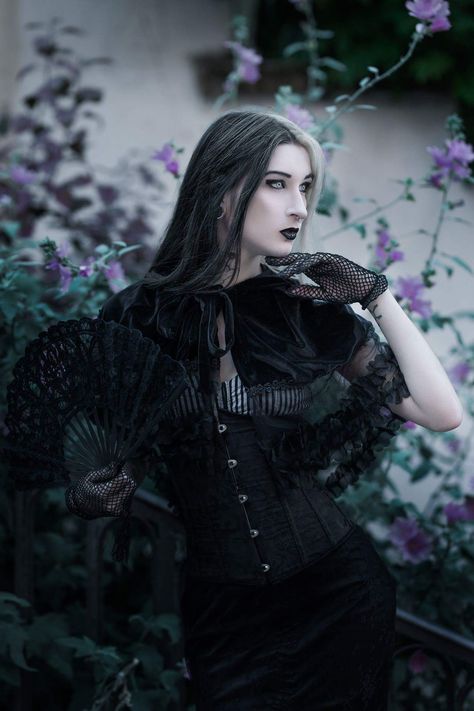 It can also come in handy in case some weirdo DJ puts on Dead or Alive’s “You Spin Me Right Round, Baby”. (“Right ’round like a record, baby, right ’round, ’round, ’round.” Oh, yeah.)
It can also come in handy in case some weirdo DJ puts on Dead or Alive’s “You Spin Me Right Round, Baby”. (“Right ’round like a record, baby, right ’round, ’round, ’round.” Oh, yeah.) 